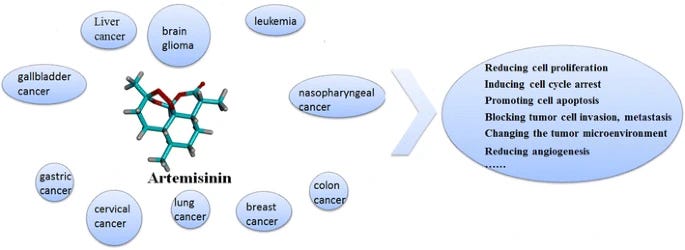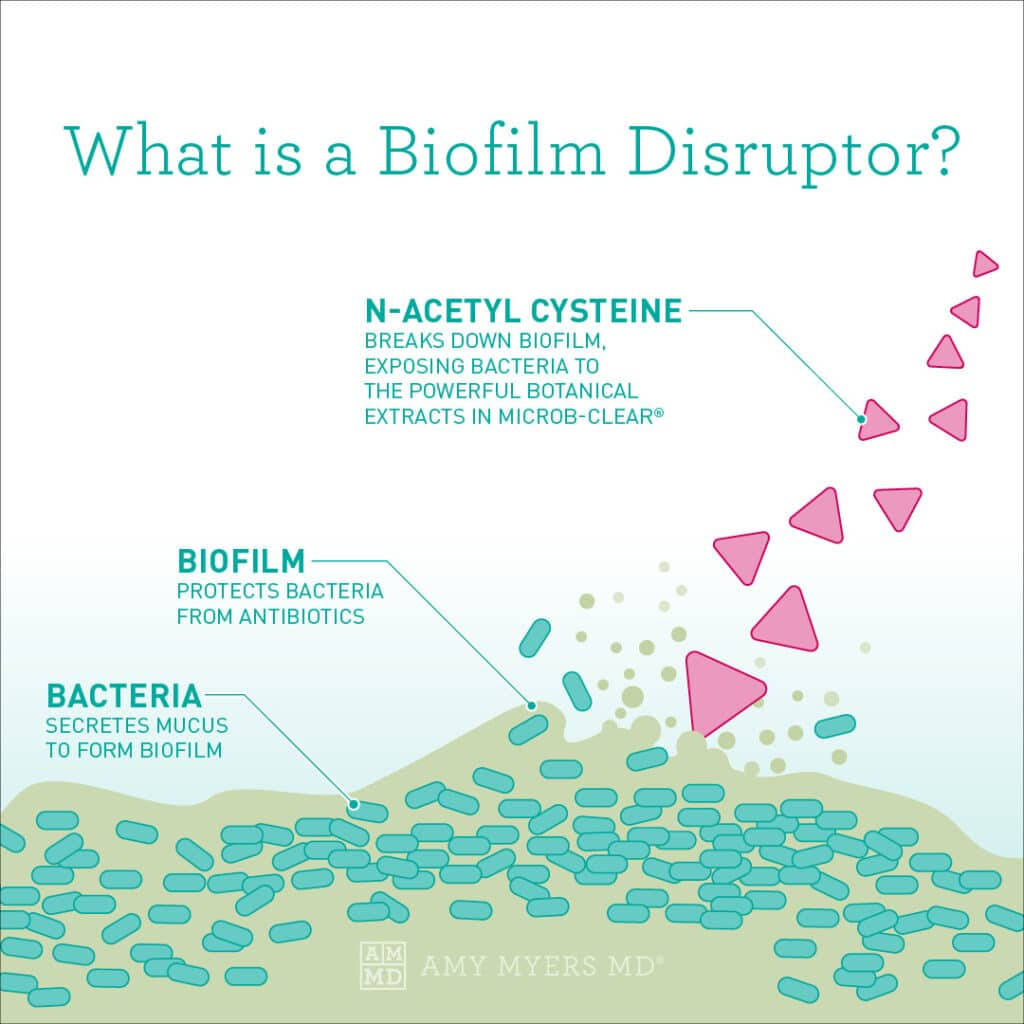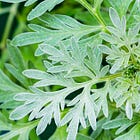(5) Part 2 - What goes into an anti-parasitic, anti-cancer healing protocol?
Every protocol must have an appropriate biofilm disruptor. [Significantly updated 6th April 2024]
I am unvaxxed
The information provided on this article does not, and is not intended to, constitute medical advice; instead, all information, content, and materials available on this site are for general informational purposes only.
The importance of biofilm
What is biofilm?
First, some background on what biofilm is and how common biofilm disruptors are in our diets. They are actually very common, although perhaps not as prevalent as they used to be when we ate natural fresh food.
The lifecycle of bacteria protected by biofilm
The image above shows the normal lifecycle of bacteria protected by biofilm, the composition of the biofilm, and how the protected micro-organisms get to spread in the body.
Most of the best information I have found on what biofilms are, is talking about the biofilms that protect antibiotic resistant bacteria like Staphylococcus aureus - golden staph from the antibiotics that were once used to destroy them.
But it is important to note that parasites and cancer cells are also able to wrap themselves in biofilm and protect themselves from attack. They use the biofilm to stop our bodies from disposing of them.
Biofilm disruptors
What are biofilm disruptors?
Biofilms can be broken down by what are called biofilm disruptors, thus exposing whatever they are protecting to the immune system and to therapies designed to kill them.
The image below shows what happens when a biofilm disruptor breaks down the biofilm at the same time as an agent toxic to the bacteria is administered. This image shows NAC as a major biofilm disruptor and names a specific antimicrobial, but there are many of each.
Biofilm disruptors are common but they need to be
The following article lists 54 biofilm disruptors and by the end of the article it becomes clear that we really do need to know what we are disrupting if we are to target parasites or cancer cells.
The 54 disruptors listed in this article are each supported by medical research, although, as I said before, most of the article is about disrupting a biofilm that is protecting a specific antibiotic resistant bacteria.
A quick look down the list will show you just how common biofilm disruptors are.
At a simple level:
“Herbs like oregano, clove, eucalyptus, rosemary, cinnamon, ginger, and curcumin are all natural biofilm disruptors. These can be taken in tea form, added as seasonings to your meals, or put into a capsule for long-term, effective biofilm treatment.”
This section added [6 April, 2024]
There are many types of biofilm disruptors
The following image gives an insight into the types of strategies that can disrupt biofilm.
And for the natural products alone, they achieve their “disruption” in a variety of ways.
Every biofilm is different
To complicate the issue, biofilms can comprise a range of different components and structures to further elude biofilm disruptors so that they can protect whatever they have been set up to protect from antibiotics or other drugs designed to kill whatever is being protected.
The following article (from which the images above were taken), is dealing with antibiotic resistant bacteria and how complex the biofilm is that achieves this resistance. Even if you don’t normally read medical papers, this one is critical to understanding biofilm. It has snippets of easy to understand interpretation hidden amongst the dense medical terminology.
Microbial biofilm: formation, architecture, antibiotic resistance, and control strategies
“In this review, we focus in detail on biofilm formation, its architecture, composition, genes and signaling cascades involved, and multifold antibiotic resistance exhibited by microorganisms dwelling within biofilms. We also highlight different physical, chemical, and biological biofilm control strategies including those based on plant products. So, this review aims at providing researchers the knowledge regarding recent advances on the mechanisms involved in biofilm formation at the molecular level as well as the emergent method used to get rid of antibiotic-resistant and life-threatening biofilms.”
In particular this article has good headings, so scanning the headings will give the reader a good summary of the scope of biofilm research. Go to the heading “Plant product–based approach” to see just how critical plants in our diets can be to controlling biofilm.
The upshot of this is that we are caught in a perpetual dance between our immune system and our nutritional intake on one hand, and bacteria and their protective biofilm on the other. As we learn to take on biofilm so that we can get to the bacteria (and presumably parasites and cancer cells) we want gone, that biofilm can change its form to resist all our efforts.
I think it is reasonable to extrapolate from biofilm used to protect bacteria, to biofilm used to protect parasites and tumours. I have not yet found research on the latter. if you find credible information, please provide links in the comments.
End of section added [6 April, 2024]
So, does the protocol I am currently using, the Artemisinin Protocol, have biofilm disruptors?
Yes it does, four of them in fact. I am not yet sure if this protocol covers all the 6 bases listed above, but it certainly covers the first base, biofilm disruptors.
Which biofilm disruptors does it include?
Naringenin (Grapefruit Juice)
I had no idea why the grapefruit juice (naringenin) was in this protocol, but here it is - it can reduce biofilm formation.
“What is the antibacterial activity of naringenin?
…naringenin and its derivatives have the potential to be used against Gram-positive bacteria due to number of different properties. They inhibit not only the growth of pathogenic bacteria, including those resistant to classic antibiotics (MRSA), but also reduce biofilm formation and toxin production.”
An important function of biofilm is cell to cell communication, and naringenin, along with other bioflavonoids, seems to be able to block that communication.
“The results of the study indicate a potential modulation of bacterial cell-cell communication, E. coli O157:H7 present in citrus species. Therefore, citrus, being a major source of some of these flavonoids and by virtue of widely consumed fruit, may modulate the intestinal microflora.”
Curcumin
Curcumin shows up in lots of protocols as something the works synergistically with the principal anti-parasitic, although the protocol rarely explains why. It seems that it has anti-cancer properties in its own right, but it is also is a biofilm disruptor.
“Curcumin compounds can inhibit the growth of polymicrobial biofilms and have been shown to have eradication activity against polymicrobial biofilms. Therefore, the curcumin compound was developed as a candidate for a new antibiofilm agent against polymicrobial biofilms.”
Sodium Butyrate
The protocol tells is that Sodium Butyrate makes the artemisinin 2-3 times more bio available. Is this because it is a biofilm disruptor? It also supports detox and that becomes important at other stages of the protocol/
Biofilm Disruptors: What They Are and Why We Need Them for Optimal Detox
“Remember the extracellular polymeric substances (EPS) excreted by pathogens to form biofilms? Well, butyrate (a short-chain fatty acid produced by healthy bacteria) can alter this protective coating and ultimately disrupt biofilms altogether.”
This artemisinin protocol is the only treatment protocol where I have seen Sodium Butyrate show up and it has us taking grapefruit juice and sodium butyrate at the same time as we take the artemisinin.
Vitamin C
Vitamin C has been shown to enhance the killing effect of a physical bactericidal agent, cold atmospheric plasma, against biofilms of S. epidermidis, E. coli, and P. aeruginosa
“Vitamin C shows excellent in vitro results as an antibacterial and anti-biofilm agent. Vitamin C should be routinely prescribed with antibiotics to treat bacterial infections in the clinical setting.”
Other biofilm disruptors I am taking or was taking before I got sick in 2022
When I look down the list of 54 biofilm disruptors I see that I have been consuming multiple biofilm disruptors, both before I go sick and since. I question why my body developed “covid”, long covid and two different cancers despite these disruptors. Maybe they were the wrong ones for the particular biofilm protecting the particular parasitic cells that have proliferated out of control in my body.
This section added [6 April, 2024]
It is also possible that the huge change in my diet once I was diagnosed as type 2 diabetic. I control my blood sugar using diet and a berberine/cinnamon combination alone which means I have a very restrictive diet. Before my type 2 diagnosis, I consumed a lot of fruit which I largely removed from my diet, and various fruits I used to eat contain significant levels of biofilm disruptors. This dietary change meant I no longer had my habitual balance of biofilm disruptors.
How curious to think that a dietary change made on medical advice designed to save my life from one issue, might have killed me in a different way.
This series of articles
These will address the 5 components of a good treatment protocol. I have separated this information into five separate posts of which this is the second.
Every protocol must have the right components
Every protocol must have an appropriate biofilm disruptor.
More on biofilm and biofilm disruptors and how they may have saved my life.
Every protocol must have something to kill the parasites, something to mop up the toxins, and something to help the liver get the waste out of the body.
An analysis of my current Artemisinin protocol and the supplements I have added to it.
I intend to keep writing about my journey through this rather strange time, both in my life and for this planet. Hopefully my story becomes exciting as I cross normal barriers to find solutions for my own collapsed health. As soon as I know, you will know what does and does not work to exorcise this bio-weapon from my body, and potentially might work for others too.
If you think my work is worthwhile you can help me get more subscriptions and donations by sharing this article and this Substack on other social media platforms, and by re-stacking this and subsequent articles in Substack Notes.
And if you see value in me sharing my journey, and would personally like to help me get to Mexico where I can find natural treatments that are illegal in the West, you can make a one-off donation through PayPal below.









![The Sweet Wormwood [Liposomal Artemisinin] Protocol](https://substackcdn.com/image/fetch/$s_!lqv7!,w_140,h_140,c_fill,f_auto,q_auto:good,fl_progressive:steep,g_auto/https%3A%2F%2Fsubstack-post-media.s3.amazonaws.com%2Fpublic%2Fimages%2Ff4acfc56-d9ce-4e09-abe0-7370460ae578_1280x961.jpeg)





Great article which I’ll have to read at least a couple times. Is there some reason you didn’t mention chlorine dioxide ? It’s a biofilm disrupter I’m familiar with.